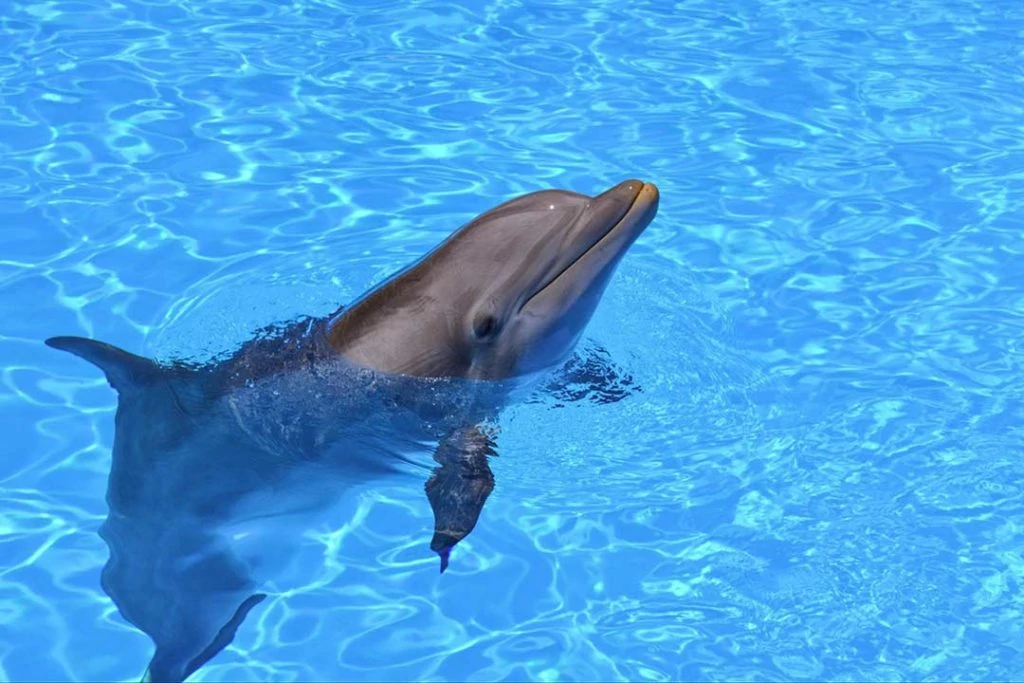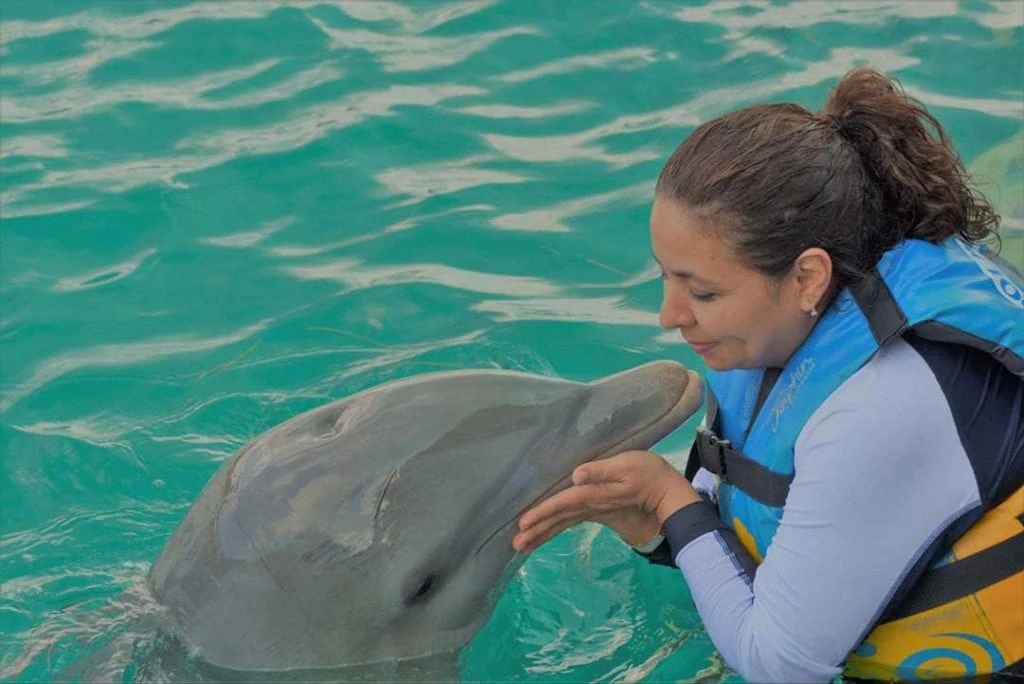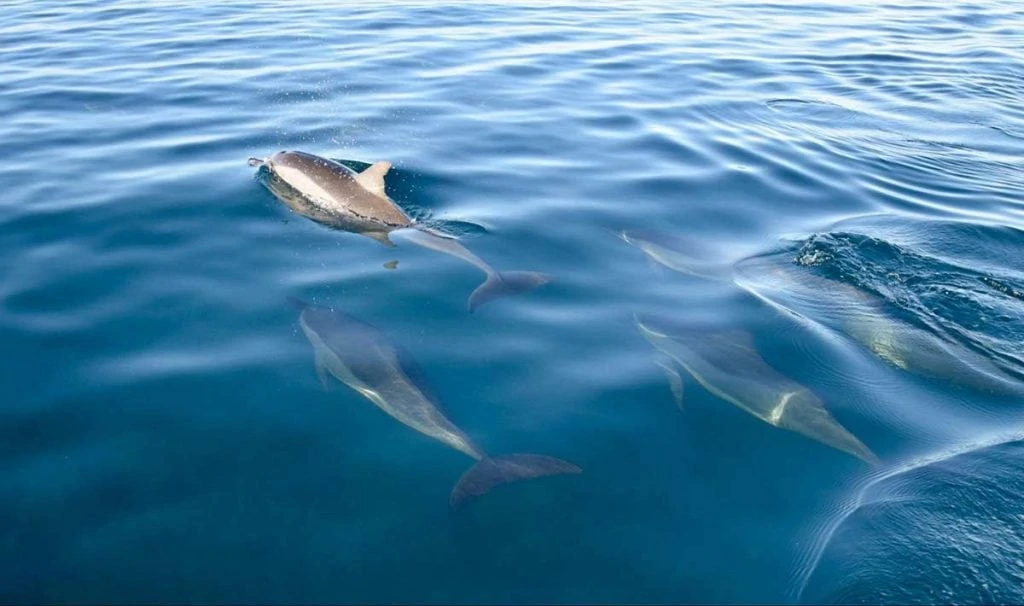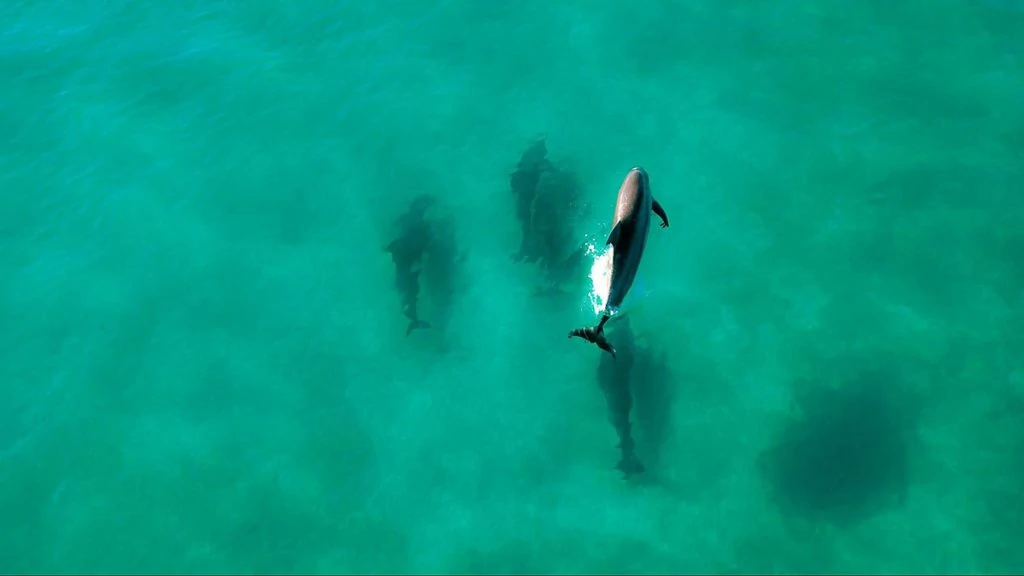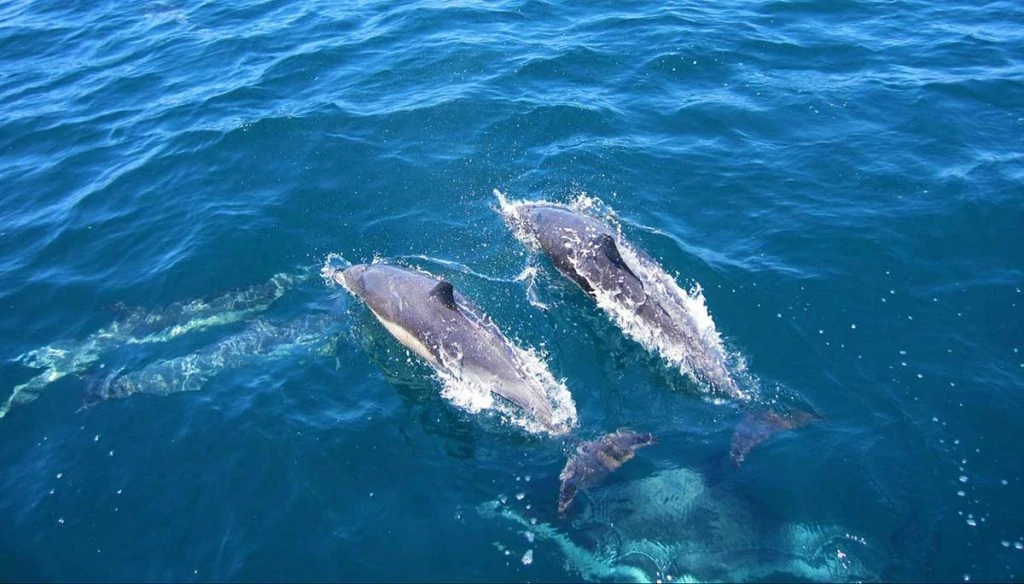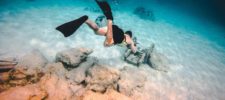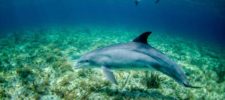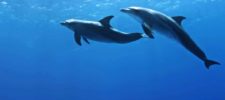Bottlenose dolphins are incredibly recognizable sea creatures, known for their gentleness and approachability. Part of our ability to recognize them comes from their friendliness towards human beings and the ways that we have learned to interact with them. Our natural curiosity motivates us to learn as many interesting facts about bottlenose dolphins that we can.
If you’ve ever wanted to know more about this amazing breed, the fun facts below will serve as a starting point. Once you know more about what makes bottlenose dolphins so special, you may even want to swim alongside them on your next beach vacation!
Why Are They Called Bottlenose?
Bottlenose dolphins get their name from the shape of their short and stubby snout, which is also known as the rostrum. Even though this is the primary way that you can recognize and spot a bottlenose dolphin from a distance or out in the wild, there are many other defining characteristics that make them so special.
The classic bottlenose shape is one of the first things you might see when you join a tour with Dolphin Seafari. Our expert tour guides not only teach you where to look for bottlenose dolphins in the wild, but they’ll even prepare you to safely swim alongside these incredible animals! You’ll get much more than just a picture from the shore when you join our excursions!
Fun Facts About Bottlenose Dolphins
Are you eager for more trivia about these awesome mammals? We’ve picked out 10 of our favorite fun facts about bottlenose dolphins in the list below. You’ll be a dolphin expert in no time!
1. Bottlenose dolphins are one of the most studied marine species in the world.
Dolphins are highly intelligent, friendly, and charismatic. As a result of their natural curiosity, dolphins readily approach humans and other creatures to investigate their surroundings. This personality trait has allowed marine biologists and scientists to get up close and personal to the species.
Bottlenose dolphins also inhabit many coastal areas, and they swim into places like bays and estuaries. Their behavior makes them more accessible than other types of sea creatures. This means marine experts can easily observe, track, and protect them.
2. They’re protected under the Marine Mammal Protection Act.
Even though bottlenose dolphins aren’t considered an endangered species in the United States, they do benefit from protection under the Marine Mammal Protection Act. As is true for any wild animal, dolphins can be susceptible to environmental stressors, pollution, sickness, and boating or fishing incidents.
Additionally, the Marine Mammal Protection Act prohibits harassment from humans and outlaws behavior that interrupts their natural feeding behaviors. That’s why it’s so important to book a dolphin tour from a trusted provider like Dolphin Seafari. We always prioritize the safety, health, and wellbeing of animals in their natural habitat.
3. Bottlenose dolphins must come to the surface to breathe.
Unlike human beings, dolphins aren’t involuntary breathers. This means that they don’t breathe in oxygen automatically. Instead, they must consciously swim to the surface in order to inhale and get the oxygen that they need.
For bottlenose dolphins, this practice happens about once every seven minutes. When they do surface, a muscular flap that protects their blowhole uncovers so that they can take deep, long breaths. Dolphins’ lungs are much more efficient than humans at exchanging the air in their lungs for fresh and breathable air.
Just imagine if you had to think and act every time you need a simple breath! Dolphins are constantly at work, even while swimming and resting.
4. Because of their breathing patterns, dolphins never fully sleep.
Perhaps one of the most shocking facts about dolphins is that they’re never totally asleep! This is a direct result of their breathing behavior, which is not a reflex like it is in human beings. One portion of a dolphin’s brain must maintain consciousness at all times so that they can continue to receive air.
In addition to their need to stay semi-alert, dolphins only close one eye during their sleep. Not only does this activate a portion of their brains for breathing, but it also allows them to be mindful of dangerous predators in their environment.
5. Dolphins are most readily found in tropical or warm waters which means that they may need to occasionally migrate or change locations.
In particular, dolphins that usually live in higher latitudes display common migration behaviors to seek out warmer water. Dolphins may also migrate due to other fish or feeding activities.
When dolphins stay close to one coastal area, they are said to be “local residents” of that particular coastline. Local dolphins can be spotted in places like Georgia, Florida, Texas, and California. Occasionally, local groups of dolphins may overlap with one another, creating a larger population of dolphins in a given area.
6. Bottlenose dolphins are extremely social creatures.
One of the things that makes bottlenose dolphins so unique is how social they are. Dolphins engage with one another in a variety of ways, including making specific sounds, squeaks, and high-pitched noises. They also regularly bump and swim into one another as a form of communication.
Dolphins continue this social activity throughout their lives, which means that both young and old dolphins can be observed chasing each other and using their food sources (mostly fish) as a means of play.
In terms of human behavior, dolphins’ natural curiosity makes them eager to follow boats, ride in wakes, and jump or swim alongside humans. This is one of the characteristics that make dolphin-watching so memorable!
7. Dolphins can identify one another with certain sounds.
Because sound is such an important form of communication for dolphins, it’s vital that they have certain signals to know who is who. Not only does this allow them to recognize family members or others in their pod, but it’s also helpful when recognizing danger.
Every dolphin is born with a one-of-a-kind whistle that serves as their primary identification system. Fortunately, bottlenose dolphins have a keen sense of hearing. This means that they can quickly pick up on these identifying whistles.
Echolocation (the bouncing of sound waves against certain objects) is also vital to a dolphin’s sense of community as they maintain awareness of their surroundings.
8. Bottlenose dolphins are serious eaters!
When it comes to a dolphin’s diet–they’re not picky! Dolphins will feast on anything from a variety of fish species, shrimp, and squid. What is available in a given area may affect what they choose, but dolphins consume a wide variety every day at the seafood buffet.
In fact, bottlenose dolphins regularly consume about 13-15 pounds of food per day! Pregnant dolphins eat considerably more and consume as much as 8% of their body weight in food sources per day. Fortunately, dolphins’ stomachs are compartmentalized so that whatever they eat can be digested rapidly as a way to make room for the next snack.
9. Pregnancy in bottlenose dolphins lasts about 12 months.
From what marine scientists and researchers can gather from observation, the gestation period for bottlenose dolphins is up to one year. After a calf is born, a female dolphin may become pregnant again in roughly 3-5 years. During the time a mother dolphin is pregnant, she eats for two (quite literally) by doubling her food intake.
Once a calf is born, the mother and baby swim in “baby position.” This means that the calf follows closely behind the mother during swimming and travel. The mother dolphin always surfaces first, with the calf following closely behind.
10. Bottlenose dolphins can jump more than 15 feet high.
As a form of play, dolphins are often seen jumping energetically out of the water. Amazingly, many bottlenose dolphins can propel themselves up to 16 feet in the air! Depending on the dolphin’s size and strength, this distance may be even higher.
When they’re in captivity, dolphins love to put on a show! Much of this is in the form of jumping in high arcs out of the water.. This behavior is one that humans love to capture in pictures and videos.
Bottlenose Dolphins in Florida
While there are a few different types of dolphins in Florida waters, bottlenose dolphins are by far the most common. When you’re oceanspotting, you can recognize the bottlenose species by their classic snout shape and their coloring. Bottlenose dolphins have blue-gray skin on top with lighter coloring on their bellies and sides.
The average size for bottlenose dolphins near the Florida coast is about 6-12 feet in length. No matter if they’re male or female, young or old, you can count on bottlenose dolphins to play, squeak, and put on an amazing show!
The Best Way to See Bottlenose Dolphins in Panama City Beach
Are you planning an upcoming trip to Panama City Beach, Florida? If these fun facts about bottlenose dolphins have you excited to hit the water for a bit of dolphin-watching, Dolphin Seafari is the perfect excursion for you and your guests. During our special VIP tours, you can:
- Swim with friendly bottlenose dolphins in their natural habitat
- Interact with marine wildlife in crystal clear waters
- Boat with confidence alongside our trusted captains
- Snorkel, explore, learn, and collect different types of sea life
Dolphin Seafari is perfect for all ages, and each tour provides memorable dolphin experiences that you won’t soon forget! You’ll not only put your dolphin knowledge to the test, but you’ll also have an adventurous, laughter-filled time on the water.
Reserve Your VIP Dolphin Tour
For many travelers, the chance to get close and personal with bottlenose dolphins is a once-in-a-lifetime opportunity. Don’t let it pass you by! We’re pleased to offer split charter and snorkel tours, private dolphin tours, and private snorkeling and walking tours.
To book your dolphin tour or discuss vacation options, give us a call at (850) 358-1013 or book online. We’re happy to accommodate different groups, ages, and interests.
Make your bottlenose dolphin adventure a reality!

